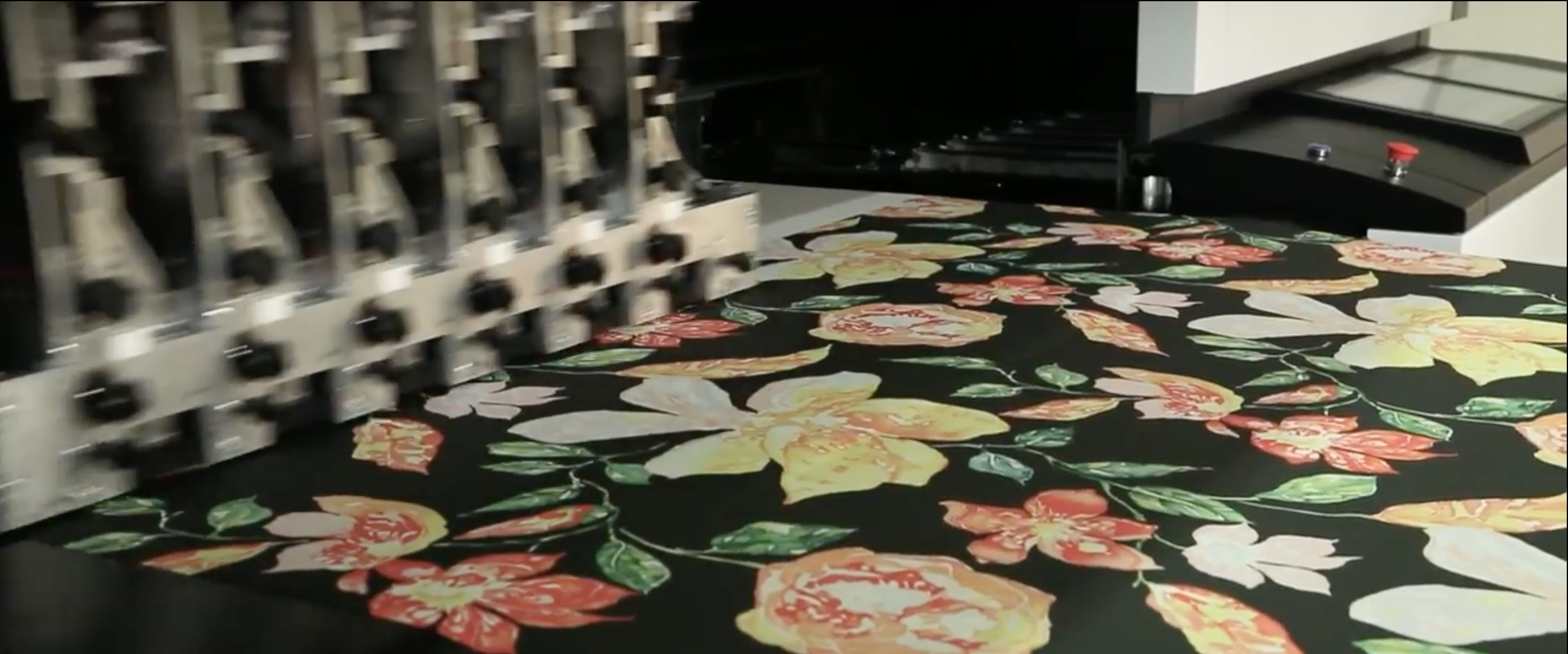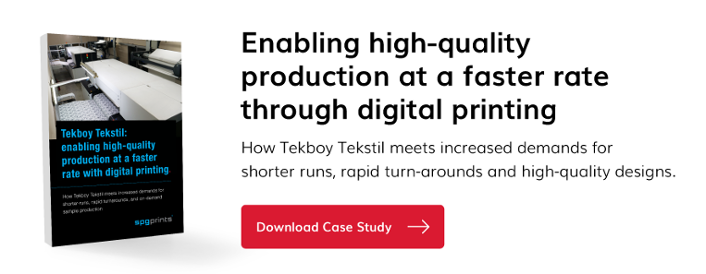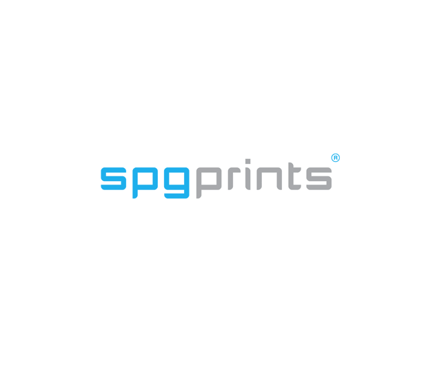What is blotch printing?
In the textile industry, the term “blotch” is referring to designs where there is a uniform background color behind the printed design elements. Because of the fact that these design elements need to be printed, normally also the background color is printed. If there were no motifs, the background color would be dyed. Blotch printing is commonly used when printing with conventional printers. However, when using a digital textile printer, blotch printing can cause several difficulties.
Printing blotches with a digital textile printing machine
For a digital textile printer, printing blotches has always been a challenge. Why is it more difficult to print blotches with a digital textile printer than with a conventional machine?
1. Problem: clogged nozzle
In digital printing, the nozzles in the print heads can get clogged during the printing process (either due to the ink or for instance dust particles cover part of the open nozzle hole). When a nozzle malfunctions, it creates a thin, white line in the design, since at that point no ink is being transferred onto the substrate, in our case the fabric. This line is immediately obeserved by the human eye, and this means the printed textile can no longer be used, as there is an error in the design.
Solution: multi-pass digital textile printing
Luckily, there is a way to solve this problem and successfully print blotches with a digital textile printing machine. By using a multi-pass digital textile printing machine, you can mask errors since the passes that you print overlap each other. This way, any possible failing nozzle in one pass will be covered by good functioning nozzles in the subsequent passes. Only when a lot of nozzles fail, there is a chance you will still see white (or lighter colored) lines due to missing nozzles.
2. Problem: the soccer field effect
Another common problem with blotch printing on a digital textile printing machine is the so called “soccer field effect”. The soccer field effect refers to the different colors of green you see when looking at a soccer field (where it is due to the mowing direction of the grass mowers). The same can occur in textile printing.
In digital textile printing, one pass is printed from left to right whereas the next one is printed from right to left. In the printhead carriage, the six print head bars (one for each color) are positioned next to each other. That means that when printing for instance a green design (made out of yellow and cyan), in the first pass (from left to right), the yellow drops reach the fabric a little earlier than the cyan drops. For the next pass, however, the bar runs from right to left which means the cyan drops reach the fabric first before yellow are added. This could cause a slight difference in the green color which creates the soccer field effect.
Solution: multi-pass printing with extended color channels
Again, multi-pass digital textile printing can help solve this problem. By having printing passes overlap — for example, by moving only up ¼ of the distance that you would previously move up (4-pass printing) — you effectively mix the order of the drops coming onto the fabric so you prevent the soccer field effect from occurring.
Another solution is to double the printhead bars and mirror the positions (for instance an 8 color printer that has the colors mounted in the order Black-Cyan-Magenta-Yellow-Yellow-Magenta-Cyan-Black). This means the order of drops reaching the fabric is always the same. Although this is a very suitable solution, it will also increase the cost of the printer as double the amount of heads and electronics are needed. From that, the carriage will also get larger and more heavy which requires a more firm frame for the printer and a more powerful motor.
High-quality digital blotch printing with Archer technology
At SPGPrints, we noticed the challenge of digital textile printers to produce high-quality blotches. For that reason, the Archer technology was created by us to increase the quality of the designs printed with our digital textile printing machines.
SPGPrints Archer technology is an innovative printing system that helps printers to increase quality through its smaller drop-size range and higher resolution (true 1200 dpi). It also significantly decreases nozzle outage, which means that with the Magnolia digital textile printers you can be certain your designs will be free of white lines caused by clogged nozzles. Also, the way the drops are positioned in the image (the so called dithering) is engineered specifically for our printheads and inks to reduce the effect of color changes due to the order the drops are placed.
Experience the unlimited possibilities of the Archer technology
The Archer technology offers printers both precision and a significantly greater jetting distance than other print heads. On top of that, the Archer print heads deliver unsurpassed quality and are less prone to damage. This helps printers to meet their customer’s demands, save costs and maintain an uninterrupted printing cycle.
Curious how the Archer technology helped other printers to offer new standards of quality and increase their production efficiency? Turkish textile printer Tekboy Tekstil wanted to print more challenging designs and increase their production efficiency to keep up with the growth of fast-fashion.
SPGPrints’ Archer technology helped them produce precise, detailed designs of high-quality and keep up with their customer’s demands. Learn more about their success story in the case study: 






